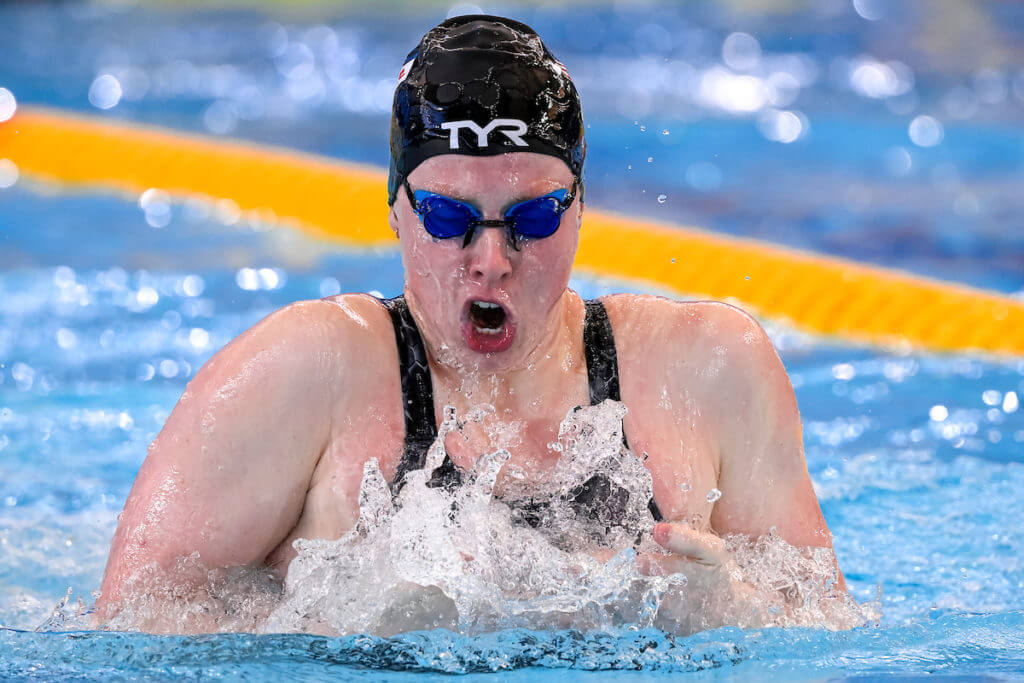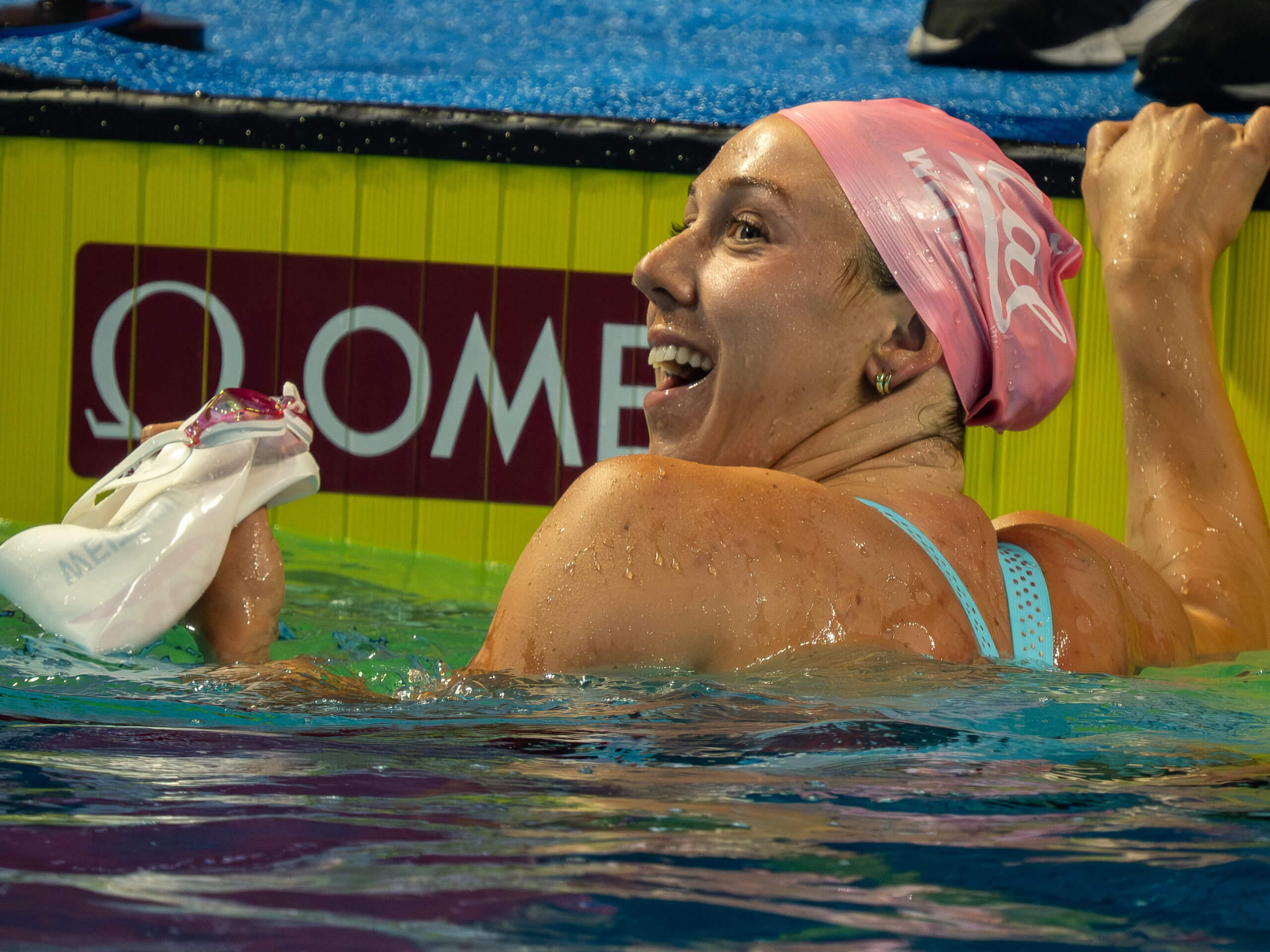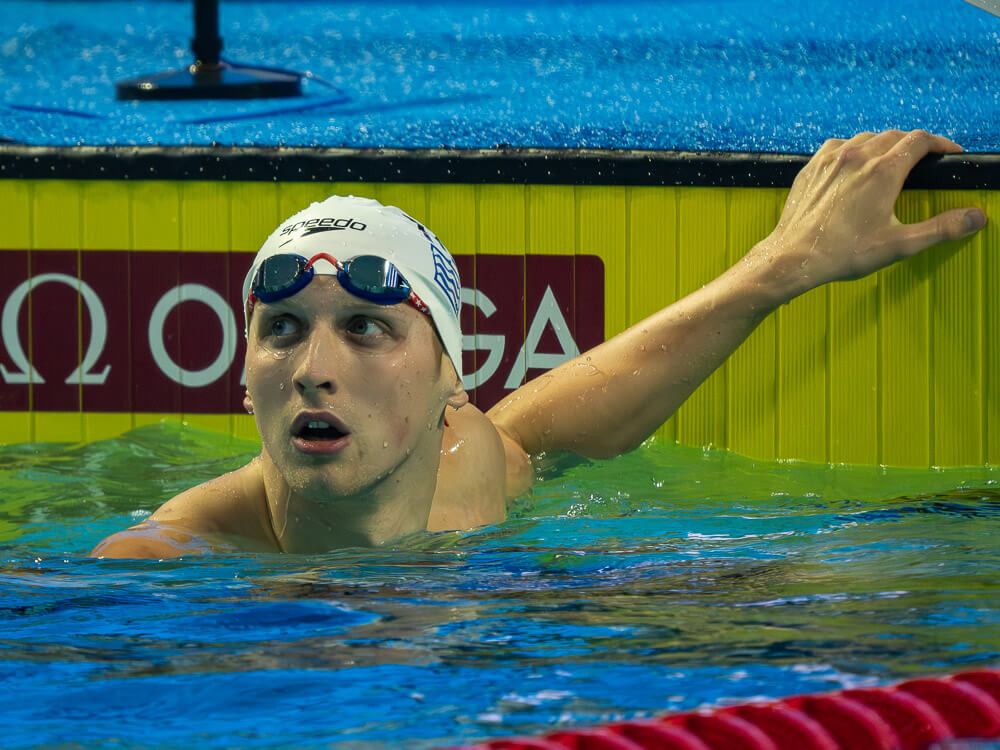Dissection of World Champs Performances Suggests USA Should Host Earlier Selection Trials

Editorial content for the 2023 World Aquatics Championships is sponsored by FINIS, a longtime partner of Swimming World and leading innovator of suits, goggles and equipment. Dissection of World Champs Performances Suggests USA Should Host Earlier Selection Trials Even within many of the United States’ 38 medal-winning swims at the World Championships, something was missing. An American team that prided itself on swimming up to the level of its international competition just was not fully clicking. It was a stark contrast as Australia outperformed expectations in final after final on the way to 13 gold medals and becoming the world’s dominant team for 2023. The Americans’ medal total second-most ever by any country at a World Championships, trailing only the 45 medals the United States captured at a World Championships missing many key international performers last year. And the results showed that the American team will enter the Olympic year with medal favorites in nearly every event. But the seven gold medals ranked as the lowest U.S. total at any major meet in 29 years, since the 1994 World Championships. The U.S. did not swim poorly by any measure, but the usual spark was dimming through much of the meet. The biggest surprise was the women’s 100 breaststroke, where Lilly King and Lydia Jacoby had been expected to finish 1-2 entering the meet. Instead, Jacoby won bronze and King ended up fourth as neither approached their best times. Abbey Weitzeil — Photo Courtesy: Peter H. Bick Torri Huske ended up with bronze in the women’s 100 butterfly, a half-second slower than her season-best time and a full second down from her gold-medal-winning mark last year. Abbey Weitzeil could not replicate her career-best times from U.S. Nationals, costing herself a medal chance in the 50 freestyle. Regan Smith was ticks short of her best times in both the 100 and 200 back and well off in the 200 fly. Even Kate Douglass, winner of an individual gold and silver in Fukuoka, swam no season-best times, although she was not far off. On the men’s side, Carson Foster could not reach the personal-best marks that would have netted him podium finishes in the 200 fly and 200 IM. Kieran Smith could not make up the margins to qualify for the 400 free final or return to medal contention in the 200 free. Hunter Armstrong barely snuck into the 100 back semifinals and final, although he did eek out a bronze from lane eight. Nic Fink adding four tenths to his Nationals time did not cost him hardware, as he tied for silver with Nicolo Martinenghi and Arno Kamminga. In relays, both Gretchen Walsh and Ryan Held faded down the stretch in their respective 400 free relay leadoff legs, creating an uphill battle for the U.S. Later on, Claire Weinstein did not even participate on the women’s 800 free relay after she swam two seconds off her best time in the individual 200 free. Sure, not everyone clicks at any major meet, but this many down performances from key vets across the board? Certainly a surprise after the 2021 Olympics and 2022 World Championships saw very much the opposite, with Americans stepping up in big finals and doing what they needed to build momentum throughout the meet. In Fukuoka, the U.S. never truly got going until capturing three gold medals on the final night. It will be up to the USA Swimming brain trust to determine what could have made Fukuoka better and apply those lessons looking ahead to the Paris Olympics. But here’s one factor that will need no fixing for 2024: the proximity of the U.S. selection meet in relation to the international competition. Traditionally, the Americans have been one of the last countries to select their Olympic and World Championships teams, doing so mere weeks in advance. Prior to the Olympics, the gap between meets is usually around five weeks; in 2021, Trials ended on June 20 and Olympic swimming began July 24, and next year’s schedule is similar, with Trials concluding June 23 and Olympic swimming commencing July 27. And for Worlds last year, the timing was similar, although not on purpose. The U.S. International Team Trials ended April 30, with Worlds starting June 18. The gap was longer there because Worlds had been originally scheduled for late May. And at that meet, the pattern of strong swims at the selection meet translating into better swims internationally came to fruition across the board. Other than King, who was recovering from a tough bout of COVID-19, the majority of Americans improved their times in Budapest. The typical American competition schedule prioritizes longer training blocks, particularly in the pre-Olympic year. In each of the previous five Olympiad cycles, USA Swimming has selected the year-before World Championships team based on results from one year prior. That has meant some deserving swimmers not getting the chance to swim at the World Championships in 2011, 2015 and 2019 because they hadn’t yet been fast enough in 2010, 2014 and 2018, respectively. Kieran Smith — Photo Courtesy: Peter H. Bick A three-year gap from Tokyo to Paris thanks to the COVID pandemic meant that the usual procedure was impractical, but the late June Nationals would still prioritize a longer training period by minimizing the time between that meet and Worlds. But what if Nationals had been held two weeks earlier, leaving a five-week gap before Worlds instead of three? That way, American swimmers would have been given more time to build their training back up and taper again, meaning an easier period of time for coaches and swimmers to manage. After all, that’s exactly what Australia did en route to that country’s best performance in years — arguably ever — at a major meet. Trials ended on June 18; exactly five weeks later, Worlds began July 23. And why does Australia hold their Trials five weeks from major competitions as opposed to the country’s four-months-out practice of yesteryear? That’s right, because they were mimicking the American model after the U.S. outperformed Australia meet after meet. USA Swimming surely knows the five-week gap is ideal. That’s what the decision-makers choose prior to an Olympics. Results at a World Championships matter, perhaps not quite to the same extent as the Olympics but still significant. Don’t coaches, swimmers and officials want swimming to be more than an every-four-years sport? So design a schedule to maximize performance at Worlds. Worried about losing those two weeks of training? Well, maybe think back to the work swimmers were putting in 13 months out from the Tokyo Olympics: not much. During the pandemic, most swimmers were out of the pool completely for two or three months at least. They still got back to form in time to race for medals. Obviously, the pandemic-mandated break was far from ideal, but it can serve as a reminder that training plans one year out can be flexible and still coalesce in time to produce desired Olympic results. The takeaway: stick with five weeks for every selection meet, the same pattern that Australia has settled into. Prioritize results every year because the benefits of a successful World Championships can provide far more in confidence and pride for a swimmer and a nation pointing toward an Olympics than two extra weeks of a training block.









Olympic Trials are also too close to the Olympics.
There’s not enough time to rebuild and taper.
The NCAA needs to get more long course meets during the college season. Many of our best swimmers are tied to lots of short course training and competing while the rest of the world has a greater focus on long course swimming. Could it be that the NCAA is actually hurting the US international performances?